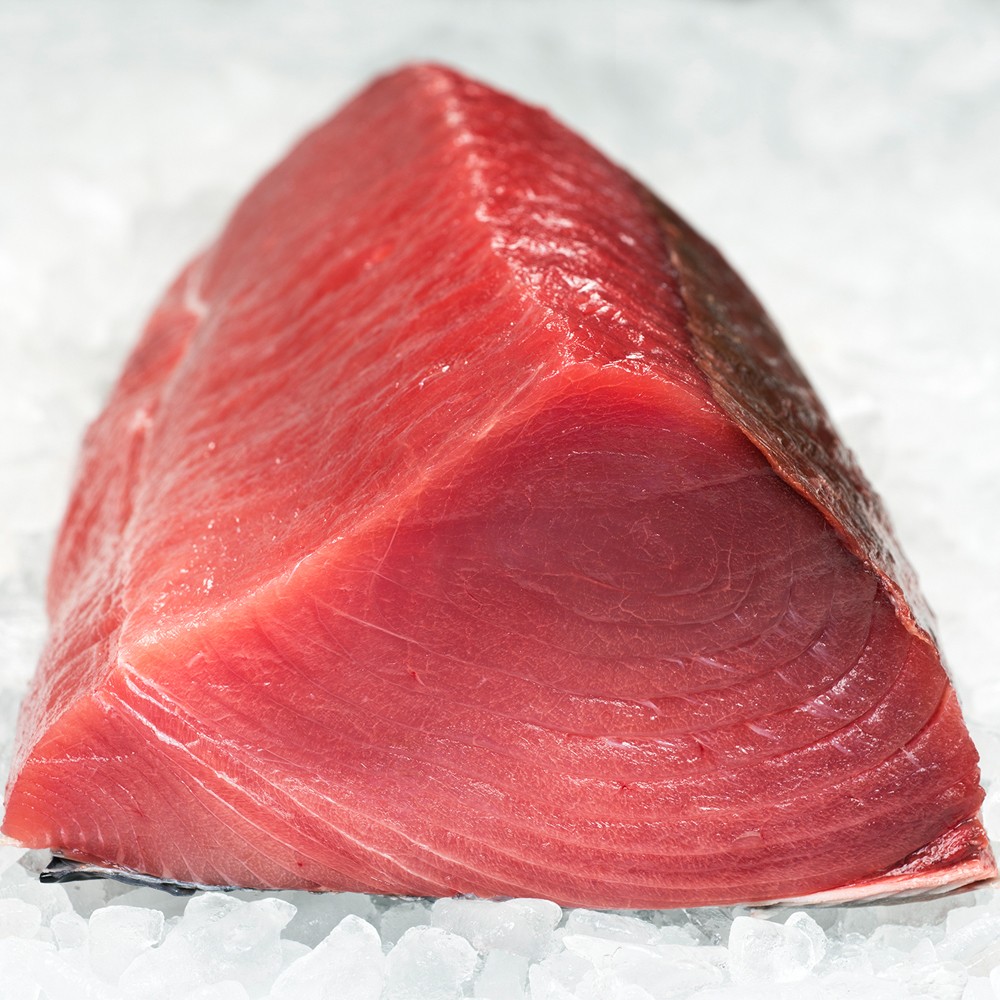
Product #: 11235L
Scientific Name: Coryphaena hippurus
Country of Origin: Costa Rica
$12.62 /LB (minimum: 1 LB)Yellowfin and bigeye tuna are two very similar tuna species that are often sold interchangeably as yellowfin tuna, because it is the more recognizable name. They have a mild flavor and meaty consistency, somewhat similar to swordfish. Their meat is firm and moist, with a bright red color that turns brown, gray or tan when cooked. Yellowfin and bigeye are best served raw as sashimi or seared and served rare. Bigeye has higher fat content and is often preferred for sashimi.
Yellowfin and bigeye tunas are found in tropical sub tropical oceans around the world.
Yellowfin and bigeye tuna are found all over the world and are highly migratory species, meaning their populations are spread over a large geographic area and many countries fish on one population. As such, they are managed by international agencies. Distinct populations of yellowfin and bigeye tunas are found in the Atlantic Ocean, Western Pacific Ocean, Eastern Pacific Ocean, and Indian Ocean. Profish sources fish from the Atlantic (U.S. and South America) and Western Pacific (Hawaii and Southeast Asia), and Eastern Pacific (South America). Tuna have a high reproductive capacity and fast growth rate, making them very resilient to fishing pressure. The population of yellowfin tuna in the Atlantic is smaller than the target size (but close) and fishing pressure is at an appropriate level to rebuild the stock to the target. The Atlantic bigeye population is close to the targets for both population size and fishing pressure. In the Pacific, yellowfin populations are healthier than bigeye populations. Yellowfin are either at or above the target population sizes, with fishing pressure less than desired, meaning more yellowfin can be harvested sustainably. On the other hand, bigeye populations are smaller than desired, with fishing pressure higher than is appropriate. One of the major sustainability concerns in tuna fisheries is bycatch. The primary gear used to harvest fresh and frozen tuna is the longline, a method by which multiple hooks are hung from a horizontal line stretching along many miles and left to fish over a period of hours. The United States has implemented many regulations to minimize the impact of longline gear on bycatch of other finfish (billfish, sharks, etc.) and protected resources (sea turtles, marine mammals, sea birds, etc.) U.S. longline fishermen are required to use circle hooks and specific types of bait to reduce the incidental catch of sea turtles. They must also participate in workshops to learn techniques for safe handling of turtles. In the Pacific there are limits set on the number of sea turtle interactions that may occur, after which the fishery is closed for the remainder of the year. There are also large areas completely closed to longline fishing to reduce interactions with protected species and juvenile swordfish, and all longline vessels must carry a Vessel Monitoring System (satellite tracking system) and often must move gear after any interaction with a protected species. Longline vessels are often required to carry fishery observers to collect data on harvest, bycatch and protected species interactions. Most foreign countries have not implemented these types of regulations to reduce longline bycatch, leading those fisheries to have serious negative effects on the ocean ecosystem. The most sustainable choice in tuna are yellowfin from the U.S. Atlantic, Gulf of Mexico and Hawaii.
These fish, either yellowfin or bigeye, are graded 2 or better and are primarily from the cold deep waters of the Pacific, however from time to time a good grading run will be from the Atlantic.
This item has been added to your cart
Loading...